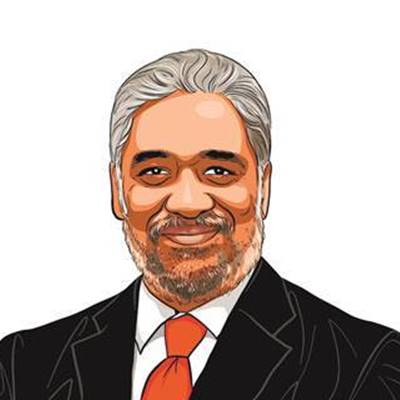Opinion Dividends of this drift
UPA 2 could well be remembered for reversing Indias rise on the world stage.
Governments troubled at home,according to one of the many foreign policy myths,are tempted to make bold on foreign policy. There is nothing to suggest that anyone in the Congress party or the UPA coalition is promoting a national security adventure to move the conversation away from Baba Ramdev. If you are drifting on domestic policy,you are most likely to squander the opportunities on the diplomatic front.
Even if fortune smiles on an inept sovereign by giving him an unexpected victory abroad,it does not in anyway reduce the need to address the pressing challenges at home. For the reprieve from abroad can at best be temporary.
Recall how US President Barack Obamas ratings got a boost when he announced on May 1 that American forces had raided and killed Osama bin Laden deep inside Pakistan. Within a month though,Obamas ratings came down amidst the persistent high unemployment figures in the US.
In approving the raid on Abbottabad,Obama had to take considerable military and political risk. It is not clear at all if the UPA government is bold enough to gamble on foreign and national security policy.
But that was not how Prime Minister Manmohan Singh started out when he took charge of the government in mid-2004. Like the economic reforms he initiated in the 1990s,Dr Singh seemed quite eager to inject new thinking into the making of Indias foreign policy in the 21st century.
During his first term as prime minister,Dr Singh sought to change the paradigm of Indias engagement with three of its most important foreign policy accounts the US,Pakistan and China.
The negotiation of the nuclear deal with the US that liberated India from three and a half decades of international atomic isolation got all the political attention at home.
But the initiatives of UPA 1 towards China and Pakistan were much bolder in conception than the nuclear deal. Dr Singh sought to negotiate on subjects that were long considered taboo by the foreign policy establishment the dispute with Pakistan on Jammu and Kashmir,and the boundary settlement with China.
While both these efforts have stalled,they allowed India to explore a terrain that it avoided for long. The results of these unfinished negotiations will stand India in good stead when opportunities present themselves to construct lasting peace settlements with Pakistan and China.
The political drift that saw UPA 2 waste its mandate in 2009 has been visible for a while on the external front. After striving so hard to break out of the nuclear embargo,Delhi made heavy weather out of the liability legislation that has complicated the plans to rapidly expand nuclear power and build a robust atomic industry at home.
If the nuclear liability legislation revealed the weakness of UPA 2s political management,Indias economic growth story and its successful navigation of the global financial crisis made it attractive enough for outsiders.
Recall that all the leaders of the five permanent members of the UN Security Council visited India and competed with each other to win contracts for their companies and participate in Indias economic boom.
But Delhis reluctance or inability to initiate major reforms or remove the obstacles to growth is now reflected in the economic slowdown and the declining attractiveness of India as a partner.
Over the last decade,Indias growth story has had one major strategic consequence the prospect of rapid defence modernisation and the emergence of India as a power to reckon with.
The smaller countries in Asia and the Indian Ocean have been looking to Delhi as a potential provider of security. The major powers were beginning to see India as a swing state in the global balance of power.
The international strategic interest in India has been accentuated by the dramatic rise of China and the widely perceived decline of the US. But India has not demonstrated the will to power either through internal defence modernisation or external coalition building.
At home,the government seems incapable of building roads on the border,let alone construct a modern defence industrial base. If UPA 1 showed imagination in crafting a new defence diplomacy,UPA 2 seemed to be drifting back to the isolationism of the past.
In the domestic arena,the costs of the current political drift will indeed be borne by the Congress party and its coalition partners. That is not of much consequence to the rest of the nation.
But the national security costs from the UPAs loss of political coherence could be at once incalculable and irreversible. Unlike on the domestic front,the opportunity costs of drift are much higher in foreign policy. It will take double the effort to achieve goals that were at hand but missed through inaction and indecisiveness.
Amidst its current self-absorption,Delhi will not find it easy to see the external consequences of the UPAs desultory performance in its second incarnation. But Indias current weaknesses appear far more clearly to external observers.
Foreign investment bankers and diplomats from the rest of the world will be clinical in their judgment on Indias downward slide and ruthless in their dealings with a rudderless Delhi.
If it continues to drift,India will be an embarrassment for its friends abroad,a less credible partner for countries large and small,and look quite vulnerable to its adversaries.
The UPAs second tenure might turn out to be more than a wasted moment when the nation had so much going for it. If it does not get its act together quickly,UPA 2 might also be remembered as the government that reversed Indias rise on the world stage.
The writer is a senior fellow at the Centre for Policy Research,Delhi
express@expressindia.com





